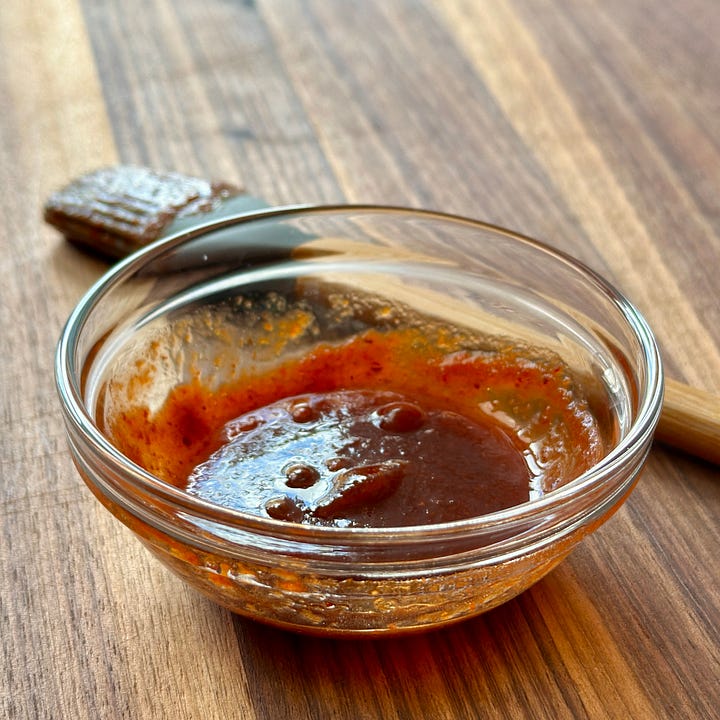Welcome!! This is a reader-supported publication. Upgrade to paid below for full access to lots of healthy menus, healthy guides, the recipe archive and more. ♡ Other ways to support my work? Buy my book and forward this post to a friend.
It’s not often that I feature pork or red meat in the newsletter and that’s by design. While Mediterranean diet guidelines include pretty much every type of food in this healthy balanced way of eating, some foods like meats and sweets are included less often - just 2-3 times a month. And a really simple way to remember this advice is to think of meats and sweets as “treats”. Not everyday fare but something special.
So today’s menu might look like a typical day of enjoying the Mediterranean diet, but it’s a very special day in disguise with an intensely-flavored pork tenderloin, a side of mash and a big pile of spring snap peas.
In Spain, cerdo (Spanish for “pork”) has an interesting history to say the least. During the Reconquista of the 1400’s, eating pork was a sign of subservience to religion. Six hundred years later, it’s a thread woven deeply into the culinary fabric of Spain. Cured jamon (“ham”), countless types of sausages and simple cuts of solomillos (“tenderloins”), secretos (“shoulder cuts”) and chuletas (“pork chops”), big and small.
Since tenderloins are the leanest cuts of all, I’m relying on a few tender slices, deeply flavored in a classic spicy Mediterranean harissa sauce blended with some of George’s honey from the farm to slather on the meat for a flavorful finish.


In the Mediterranean region, harissa is popular as a dried spice blend or paste. It’s safe to say I’m never without a tube or two in the pantry. It’s fabulous as a seasoning for roasted potatoes or a glaze over salmon if you’re looking to add a little spice to the day.
And one more tidbit about the particular pork I’m using although I know most folks won’t be able to get their hands on it. It’s an (insanely?) expensive category of pork called “Iberico Bellota” from a special breed of pigs raised in southwestern Spain. What makes it so unique is that its fat becomes healthy mono-unsaturated fat, just like olive oil, as the pig feeds on acorns in a special forest area called the dehesa.
Iberico ham is best known around the world as a cured delicacy when it’s expertly sliced wafer-thin and plattered like a jewel, but the rest of the meat is just as special. The background is a really interesting story unto itself that I learned about during my days as a culinary journalist years ago and if you’re interested, here’s a link to a video that can explain it better than I can. Spanish Iberico Ham: The Iberico Pig and its Rearing
As always, you’ll find a few extra treats in the menu PDF besides the meal plan I promised you (mostly because I just can’t help myself). When I can, I’ll reach into the archive so that you don’t have to go hunting around.
So it’s time to pull up a chair, grab a cup or a glass and join me in my Mediterranean kitchen while we work our way from one flavor-packed healthy meal to another.
Want to upgrade to a paid subscription so you don’t miss out on anything? Everything you’ll want to know to master the Mediterranean diet including exclusive weekly meal plans and recipes, how-to-guides and behind the scenes are all here waiting for you to spend a few Mediterranean minutes with me.
Keep reading with a 7-day free trial
Subscribe to Mediterranean Minutes • Master the Mediterranean Diet to keep reading this post and get 7 days of free access to the full post archives.







